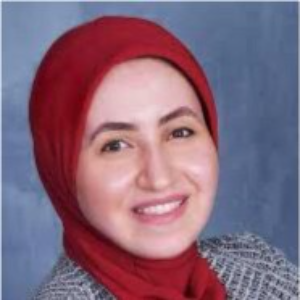Title : Moya moya and atherosclerosis
Abstract:
Introduction
In the literature, there are not so many cases that connected Atherosclerosis to MMDandit hasn’t been assured by pathological studies as well. Moya Moya disease is a uniquecerebrovascular disease characterized by progressive large intracranial artery narrowingespecially affecting the arteries of the Circle of Willis and the development of prominent small vessel collateral. This case report describes a 47-year-old Indian female who presented withsymptoms of a stroke and was found to have Moya Moya Disease (MMD) and atherosclerosis. The patient had a right middle cerebral artery (MCA) territory infarction due to a blockedMCA and slight narrowing caused by atherosclerotic calcification along the distal right internal carotid artery (ICA). The patient was admitted for further assessment on a neuro telemetryfloor.
MMD is a unique cerebrovascular disease characterized by the progressive narrowing of largeintracranial arteries leading to the development of small vessel collaterals to compensate for decreased blood supply to the brain. It is named after the characteristic "smoky" appearanceseen in angiography. MMD was first described in Japan in 1957 and is more common in Asia. It has a bimodal distribution, affecting children around age 5 and females over 40 more oftenthan males. The cause of MMD is unknown, but genetic factors and associated conditions likeatherosclerosis have been identified.
Case description
The patient is a 49-year-old Indian female with a history of diabetes for 18 years and is takingoral hypoglycemic medication. She presented to the emergency department with stroke-likesymptoms including slurred speech, left facial droop, and left upper extremity weakness. Noheadache, vision changes, or drug, or alcohol abuse was reported. The physical examshoweda right central facial palsy with decreased strength in the right upper extremity. Blood workwas normal except for slightly elevated glucose levels. A CT head showed an acute right middle cerebral artery infarction and a CTA brain showed severe stenosis of the left internal carotid artery with atherosclerotic calcification along the distal right ICA. MRI showeddiffusion restriction in the right frontal lobe, right insula, and right basal ganglia, consistent with a right middle cerebral artery infarct without hemorrhage. A diagnostic cerebral angiogram showed an occlusion of the proximal right M1 with a moyamoya pattern, andmoderate to severe multi-focal stenosis, including the left petrous cavernous junction of theICA, the communicating segment of the left ICA, the clinoid segment of the right ICA, andright A1 A2 junction, indicating a possibility of underlying atherosclerosis. The patient was discharged on dual antiplatelet therapy (aspirin and Plavix), tight control of diabetes, bloodpressure, and high-density lipoprotein.
Discussion
The term Moya Moya can be classified into 2 types according to the associated symptoms, the first type is called Moya Moya disease (MMD) or primary/ Idiopathic Moya Moya whichis usually discovered in children with genetic susceptibility without any associate conditions, and the other type is usually referred to as Moya Moya syndrome (MMS) that's morecommon in adults where occlusion of the vessels is usually secondary to a variety of occlusivevasculopathy, including atherosclerotic disease, that involve the terminal ICA and its branches and according to Peerless report in 1997, it was reported a histopathological evidence that atherosclerotic occlusive disease can lead to secondary Moya Moya collateral formation.
But recent studies had shown that there is some genetic susceptibility for Moya Moyasyndrome, and detecting these genetic factors earlier might help with detecting the type2 earlier, A polymorphism, R4810K (p.Arg4810Lys), in the Ring Finger Protein 213 (RNF213) gene at chromosome 17q25.3 was found as the most associated genetic factor for MMDinEast Asian populations, using genome-wide linkage and exome analysis, And that RNF213R4810K-related vasculopathy is not well characterized, except in MMD. However thosevariants were not only associated with MDD but other intracranial atherosclerosis andsystemic vascular diseases, such as peripheral pulmonary artery stenosis and renal arterystenosis.
The R4810K variant was found in 95% of patients with familial MMD, 80% with sporadic MMD, and 1.8% of control individuals in a Japanese population, that variant is an Asian founder mutation and its prevalence is reported to be up to 2.5% in East Asians although it has not been reported in Western populations, and the spectrum of RNF213 cerebral vasculopathywas found to be more common in middle-aged onset adults who might be only homozygous or heterozygote for the gene but at that case, the cerebral vasculopathy will be associatedwith systematic involvement and there might be other underlying genetic factors.
However, Many non-R4810K variants (rs148731719 and rs397514563) were recently foundinCaucasian, and East and South Asian cases, The R4810K variant was found to be relatedtoischemic-type MMD, whereas non-R4810K variants (especially A4399T) are relatedtohemorrhagic type MMD. And combinatorial interactions between RNF213 variants and other gene variants should be brought into consideration. A recent case series of European familial MMD showed rare candidate variants of RNF213 and PALD1 within the same families that were suggestive of synergism between the 2 sets of gens.
Systemic evaluation using poly vascular CT angiography should also be considered in R4810Khomozygotes because of the high penetrance rate of systemic vascular involvement. The treatment for Moya Moya typically involves a combination of surgical and medical management.
1.Surgical intervention: -Direct bypass surgery: involves connecting blood vessels around the blocked arteries to reroute blood flow to the brain. -Indirect bypass surgery: involves creating new blood vessels to reach the brain through a process called angiogenesis.
2.Medical management: -Anti-platelet therapy: to prevent blood clots from forming in the affected blood vessels. -Blood pressure management: to help prevent further damage to the affected blood vessels. -Blood-thinning medications: to prevent blood clots from forming. -Corticosteroids: to reduce swelling in the brain. It is important to note that the type of treatment recommended for Moya Moya depends onthe severity of the condition and the overall health of the patient.




